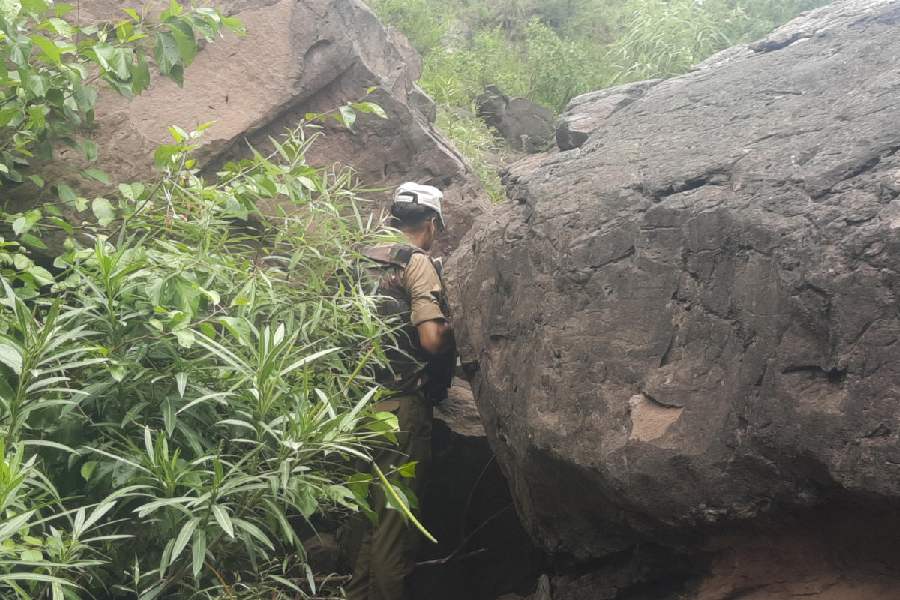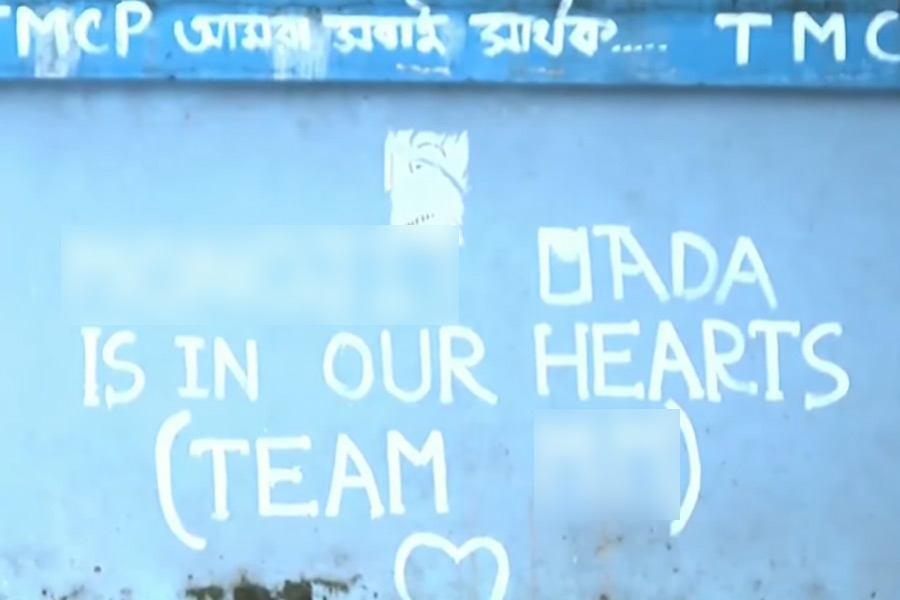 |
 |
 |
 |
| (From top): visitors at a small chapel in Meteora; a view of Metamorphosis monastery; frescoes at Pantokrator monastery; outside St Stephen’s monastery |
In Greek it means ‘suspended from air’. And, when I caught my first glimpse of the Meteora monasteries in Greece, it wasn’t hard to understand the name. They are perched on top incredible pillars of sandstone that rise vertically into the sky. Let’s just say it’s the perfect getaway if you value a life of solitude.
The journey to Greece had begun oddly enough, in South Wales of all places. There, I met up with Dr Dipak Ghosh and another friend who I had once taken on a tour of the Ladakh monasteries. Now it was their turn to return the compliment.
We landed in Greece on a beautiful November afternoon and drove north from Trikala, near Athens. When we started, the landscape was flat but slowly rocky structures began to protrude from the ground. Finally, as we approached Meteora, extraordinary pillars rose into the sky.
The Greeks have their own explanations about Meteora that dip into the country’s myths and legends. One version is that these were petrified giants. Another explanation is that these were the storehouses for Zeus’ thunderbolts. According to the dictionary I consulted, the word ‘meteor’ is a derivative of Meteora.
Whatever their origin, the pillars look amazing and different at different times of the day. At noon, they looked gloriously incongruous. But when we looked at them in the evening, they were silhouetted against the setting sun. And when floodlights came on at night, the monasteries became huge.
Giant-sized rocks hide the monasteries. From ground level, I looked up but found it tough to spot them. And even when you sight them, they’re deceptive and could easily pass for bell towers or conical domes on rocky hills.
The monasteries have a convoluted history. It’s said that hermits seeking solitude came here to Meteora’s caves a thousand years ago. At that time, Greece was a part of the Byzantine Empire. But the Byzantine Empire fell to the Ottoman Turks in the 14th century and Islam arrived in this part of the world with sword in hand. Greece then became a part of the Ottoman Empire.
Once the Ottomans took control, many monks fled from different parts of Greece and found refuge atop the rocks. Their climbing skills must have been astonishing, with the earliest monasteries reached only by articulated removable ladders. With patience and probably numerous casualties, they managed to build complex monasteries on such unlikely foundations that divine intervention seems the only explanation.
There were once two dozen monasteries here. Six remain active, while the ruins of others are abandoned and inaccessible. Until the 1920s, provisions and indeed the monks themselves were hauled up in nets on a windlass. This required quite a leap of faith ? the ropes were replaced, so the story goes, only “when the Lord let them break”. Today, visitors reach the monasteries via bridges and steps hewn out of the rock.
We took almost four hours to reach Meteora with a stop at Affissos. As we came closer, the Meteora rocks looked almost unreal. The car wound up towards the top and we stopped near St. Stephen’s monastery. Women visitors have to cover their shoulders and legs but this was no problem for our sari-clad ladies. But the Europeans and Americans, suddenly began to envy their outfits. In the monastery church, there are icons to admire, a museum and a shop selling postcards and guidebooks.
On entering the monastery, we climbed the steps, carved out of the rock in 1922. One of our first halts was at the wheel-room, where people or objects were winched up. When we saw the steep drop from the winch, it’s no surprise that many were too scared to undergo the journey! Another monastery has a precarious cable car (the only access) and supplies are often ferried across.
The Turkish threat has vanished into the mists of history but the world is encroaching heavily on the monks. With a million visitors each year, opportunities for solitary contemplation must be limited. Somehow, even for an outsider, it doesn’t seem right to see this place of solitude and meditation being spoiled by hundreds of visitors, laughing and chatting loudly to each other and into their mobile phones. In between all this, they occasionally stop to cross themselves and to line up and kiss the feet of their favourite saints. Solitude has an entirely different meaning at places like the Tawang Monastery in Arunachal.
We tried to visit all the monasteries in one day and by evening were beginning to suffer from monastery phobia on hearing that there was one more left. But we saw scholars of monastic culture or medieval icon painting enthusiastically tramping from one monastery to another. The two most rewarding for the public are probably Moni Megalou Meteorou, also known as Metamorphosis (Transfiguration), and Moni Agia Triada (Holy Trinity).
Metamorphosis is the largest and grandest of the monasteries. It looks down on the lowlier world from a height of 2,000ft. Its splendid church has a striking series of frescoes depicting the ingeniously horrible deaths of various martyrs. Further morbid fascination awaits visitors in the sacristy, where large numbers of skulls and bones are laid out on shelves.
We looked around the old kitchens and cellars, marvelling at just how much bread and beer they used to get through in a monastery this size. As we looked out, November’s autumn colours had given the surrounding areas a lovely hue. And in the distance, we could see snow-capped mountains.
Meteora is a surreal place. We didn’t kiss the feet of icons, and were not disturbed by the pathological attention to gory detail in some of the frescoes like the Christian tourists, but we were not blind to marvels, both natural and human. To celebrate a creation that stretches the imagination and confounds explanation, plan on a pilgrimage to Meteora.
Photographs by Partha De Sarkar and Simon Ghosh
FACT FILE: To visit Meteora you have a number of choices. You can go on a tour with 30 or 40 other people which is okay I guess, if you like that kind of thing. You can contact Dolphin Hellas Travel or Fantasy Travel in Athens. You can also go on your own in a rental car. Or you can get there by taking the train from Athens to Volos and connecting with the narrow gauge train that ends up in Kalambaka. You can also get there by bus from Athens to Trikala and then to Kalambaka. Most people who visit Meteora stay overnight either in the modern town of Kalambaka or in the small village of Kastraki.
Entry tips
Opening times vary for each monastery. But they all close at lunchtime and for one day during the week. Each charges a small entry fee, and both sexes should be modestly dressed. Women are expected to wear skirts, but you can borrow one from the selection at the entrance to pull on over your hiking clothes.
Meteora gets crowded in the summer, especially at weekends. In the winter, it can be freezing cold, though the mist and snow may add to the magic.Spring and autumn are the best times to visit.
Hotels near Meteora
• Divani Kalambaka Hotel — Class ‘A’
• Andonidis Hotel — Class ‘B’
• Amalia Hotel — Class ‘A’
• Edelweiss Hotel — Class ‘B’










